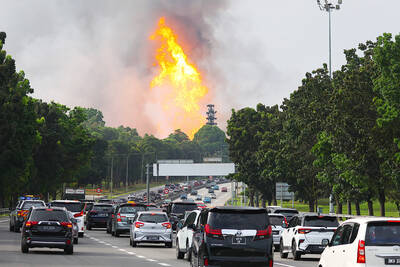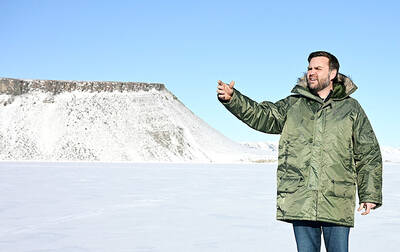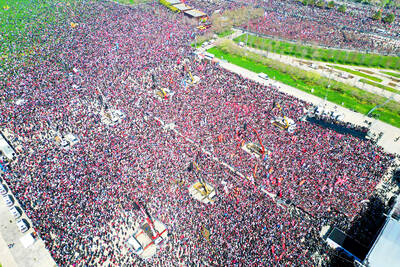The young man’s monochrome portrait is at least 70 years old, the whites all faded to yellow, but it is still clear he had style. His hair is slicked down, eye arched, suit perfect with matching tie and handkerchief.
He also had the good fortune to escape Europe in the early days of World War II. The photo, a gift to the man who helped him escape, is one of seven recently discovered snapshots that cast light on a little known subplot of the war — even as Germany sought to seal Jewish Europeans in, a small army of tourism officials from its main ally, Japan, helped shepherd thousands away to safety.
“My best regards to my friend Tatsuo Osako,” is scrawled in French on the back of the picture, which is signed “I. Segaloff” and dated March 4, 1941. His fate is unknown.
An effort is under way to find the people in these portraits or their descendants, all of whom are assumed to be Jewish. Personal photos of such refugees, who often fled with few possessions, are rare.
The photos were found in an old diary owned by Osako, who was a young employee of the Japan Tourist Bureau at the time, and died in 2003.
Akira Kitade, who worked under Osako and is researching a book about him, has contacted Israeli officials for help and visited the US Holocaust Memorial Museum in Washington.
The museum said he gave it about 30 photographs that he is trying to identify, and received a list of over 2,000 Jews who received travel papers that enabled them to reach Japan.
Israeli Ambassador to Japan Nissim Ben Shitrit says he has passed on the information to Yad Vashem in Jerusalem, which tracks and honors victims of the Holocaust, and is optimistic some of the individuals can be tracked down.
The photos shed further light on the story of Chiune Sugihara, a Japanese diplomat stationed in Lithuania who granted transit visas to several thousand Jews in the early days of the war. In doing so, he defied strict stipulations from Tokyo that such recipients have proper funds and a clear final destination after Japan.
Sugihara was one of a handful of diplomats such as Sweden’s Raoul Wallenberg and Hiram Bingham of the US who used their bureaucratic machinery, often without their government’s knowledge, to issue the paperwork that would get Jews to safety.
Dubbed the “Japanese Schin-dler,” Sugihara was honored in 1985 by Yad Vashem as one of the Righteous Among the Nations, a high honor reserved for non-Jews who saved Jews at their own personal risk from the Holocaust, Adolf Hitler’s destruction of 6 million Jews.
A short movie about him, Visas and Virtue, won an Academy Award in 1997. Museums at his home town and in Lithuania are dedicated to his memory.
In league with Jan Zwartendijk, a Dutch consul in Lithuania, Sugihara worked nonstop on visas for Jews in the months until Russia annexed Lithuania in August 1940 and he was forced to leave the country. He issued thousands of documents and continued to slip blank visas out of the window of his train as it pulled away, according to accounts of his departure.
Visas issued by Sugihara, who died in 1986 at the age of 86, are estimated to have given about 6,000 Jewish refugees a lifeline out of Europe, though records are incomplete. These transit visas enabled them to travel through Russia on the Trans-Siberian railroad, a harrowing journey over thousands of kilometers that could take weeks, into Japanese-controlled territory in Manchuria.
While the diplomat pumped out his visas independently, a much more organized and lesser-known effort was under way for Jewish refugees once they reached Japanese territory — which is where Osako enters the saga.
In 1940, the Japan Tourist Bureau (JTB), the country’s main tourist agency, agreed to help Jews in the US distribute aid money to refugees fleeing Europe. This would allow them to fulfill immigration requirements and help them function once inside Japan.
The decision was made despite Tokyo’s close ties to Germany; according to JTB records the company had the permission of officials in the Foreign Ministry and other agencies.
The bureau assigned workers to help refugees at various stages of their journey, and Osako, in his second year of employment, worked as an escort and clerk on ships that took them across the Sea of Japan to the island nation.
Most would then go on to the port cities of Kobe and Yokohama and try to arrange passage onward.
“Sugihara has been praised around the world and is held in very high esteem, but Mr Sugihara’s great actions were supported by various individuals working unseen, in his shadow, and I’d like Mr Osako’s experiences to be known,” Kitade said.
The messages on the photos given to Osako are in languages that reflect the Nazi advance through Europe: German, Polish, Norwegian, French.
Kitade said the images left a strong impression on him.
Historians have various theories as to why Japan allowed Jews to pass through, and others to settle in its Manchuria territories. Some say it was done on purely humanitarian grounds, while others say the country wanted to gain educated citizenry for its newly conquered lands and curry favor with the US in the years before the two countries went to war.
Osako’s daughter, Mie Kunimoto, now 62, was surprised to learn about the photos.
“I never heard about this, and neither had my sister. He wasn’t the type of person to talk about the past,” she said.
Osako he also had time to make friends along the way — he said that some were very helpful in his duties, and he recalls seeing Jewish women “of a rarely seen beauty.”
“A souvenir to a very nice Japanese man,” reads the Polish message on another of the photos from his diary, this one of a dark-haired young lady with a slightly furrowed brow. The signature looks like “Rozla.” Her fate is also unknown.

A fire caused by a burst gas pipe yesterday spread to several homes and sent a fireball soaring into the sky outside Malaysia’s largest city, injuring more than 100 people. The towering inferno near a gas station in Putra Heights outside Kuala Lumpur was visible for kilometers and lasted for several hours. It happened during a public holiday as Muslims, who are the majority in Malaysia, celebrate the second day of Eid al-Fitr. National oil company Petronas said the fire started at one of its gas pipelines at 8:10am and the affected pipeline was later isolated. Disaster management officials said shutting the

US Vice President J.D. Vance on Friday accused Denmark of not having done enough to protect Greenland, when he visited the strategically placed and resource-rich Danish territory coveted by US President Donald Trump. Vance made his comment during a trip to the Pituffik Space Base in northwestern Greenland, a visit viewed by Copenhagen and Nuuk as a provocation. “Our message to Denmark is very simple: You have not done a good job by the people of Greenland,” Vance told a news conference. “You have under-invested in the people of Greenland, and you have under-invested in the security architecture of this

Japan unveiled a plan on Thursday to evacuate around 120,000 residents and tourists from its southern islets near Taiwan within six days in the event of an “emergency”. The plan was put together as “the security situation surrounding our nation grows severe” and with an “emergency” in mind, the government’s crisis management office said. Exactly what that emergency might be was left unspecified in the plan but it envisages the evacuation of around 120,000 people in five Japanese islets close to Taiwan. China claims Taiwan as part of its territory and has stepped up military pressure in recent years, including

UNREST: The authorities in Turkey arrested 13 Turkish journalists in five days, deported a BBC correspondent and on Thursday arrested a reporter from Sweden Waving flags and chanting slogans, many hundreds of thousands of anti-government demonstrators on Saturday rallied in Istanbul, Turkey, in defence of democracy after the arrest of Istanbul Mayor Ekrem Imamoglu which sparked Turkey’s worst street unrest in more than a decade. Under a cloudless blue sky, vast crowds gathered in Maltepe on the Asian side of Turkey’s biggest city on the eve of the Eid al-Fitr celebration which started yesterday, marking the end of Ramadan. Ozgur Ozel, chairman of the main opposition Republican People’s Party (CHP), which organized the rally, said there were 2.2 million people in the crowd, but